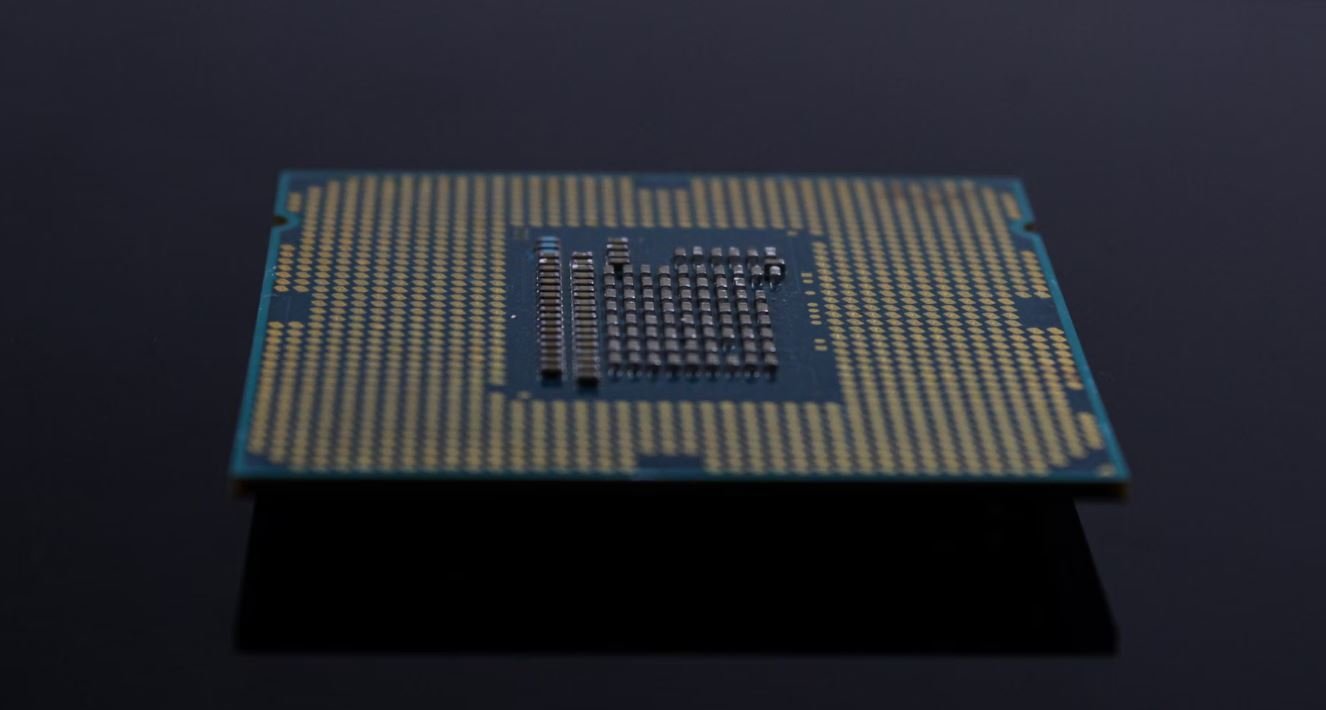AI Project Cycle
Artificial Intelligence (AI) projects require a systematic approach to achieve successful outcomes. The AI project cycle includes several essential stages that help define the process from start to finish, ensuring comprehensive development and deployment of AI solutions.
Key Takeaways:
- The AI project cycle covers the complete process of developing and deploying AI solutions.
- It consists of six stages: Problem Identification, Data Collection, Model Training, Model Evaluation, Model Deployment, and Monitoring.
- Each stage in the cycle is critical for the overall success and effectiveness of the AI project.
Problem Identification: The initial stage of the AI project cycle involves identifying the problem or opportunity that AI can address. This stage determines the goals, objectives, and scope of the project. *AI can potentially revolutionize the way businesses operate and provide innovative solutions.* Defining the problem clearly helps in setting realistic expectations and selecting appropriate AI techniques.
Data Collection: Once the problem has been identified, the next step is to collect and gather the relevant data required for training AI models. *Data is the fuel that powers AI algorithms and models.* This stage involves data cleaning, preprocessing, and augmentation to ensure high-quality and diverse datasets that can feed into the training phase.
Model Training: The data collected is then used to train AI models. *During training, AI algorithms learn from the data to make predictions or perform specific tasks.* This stage involves selecting and implementing appropriate models, tuning hyperparameters, and iterating until the model achieves the desired level of accuracy and performance.
| Model Type | Description |
|---|---|
| Supervised Learning | Models learn from labeled data. |
| Unsupervised Learning | Models find patterns and relationships in unlabeled data. |
| Reinforcement Learning | Models learn through trial-and-error interactions with an environment. |
Model Evaluation: After training, it is essential to evaluate the performance and efficacy of AI models. This stage involves assessing metrics such as accuracy, precision, recall, and F1 score to determine how well the models generalize to unseen data. *Evaluating models helps identify areas for improvement and fine-tuning.* Robust evaluation techniques ensure reliable and effective AI solutions.
| Metric | Description |
|---|---|
| Accuracy | The percentage of correct predictions made by the model. |
| Precision | The percentage of true positive predictions out of all positive predictions. |
| Recall | The percentage of true positive predictions out of all actual positive instances. |
| F1 Score | The harmonic mean of precision and recall, providing a balanced measure. |
Model Deployment: Once a model has been evaluated and deemed satisfactory, it is ready for deployment. *Deployment involves integrating the AI solution into the existing infrastructure or system.* This stage may require collaboration with IT teams for software integration, ensuring scalability, and addressing any security or privacy concerns.
Monitoring: After deployment, ongoing monitoring of the AI solution is crucial to ensure its continued effectiveness and reliability. *Monitoring helps detect any performance degradation or issues.* This stage involves tracking key metrics, analyzing feedback, and periodically retraining or updating the model to adapt to changing data patterns or requirements.
Conclusion:
Successfully navigating the AI project cycle enables organizations to harness the power of AI and drive innovation. By following a structured approach, businesses can develop and deploy AI solutions that deliver meaningful results, address complex problems, and unlock new opportunities.

Common Misconceptions
Misconception 1: AI Projects are All About Cutting Edge Technology
- AI projects require a comprehensive approach that goes beyond technology alone.
- Domain expertise and knowledge of the problem domain are key to successful AI projects.
- Data availability and quality are often more critical than the latest AI algorithms.
Many people believe that AI projects are solely focused on using cutting-edge technology. While technology is an important component, it is not the only factor that determines the success of AI projects. Domain expertise and a thorough understanding of the problem domain are equally crucial. In fact, without deep knowledge in the specific field, AI implementation may not effectively address the problem at hand. Additionally, the availability and quality of data play a significant role in the success of AI projects. Without enough high-quality data, even the most advanced algorithms may fail to deliver expected results.
Misconception 2: AI Projects Produce Immediate Results
- AI projects often require significant time for development, training, and fine-tuning.
- Realistic expectations should consider the time required to gather and preprocess data.
- Iterations and adjustments are common in AI projects to enhance performance.
It is a common misconception that AI projects can deliver immediate results. In reality, AI projects involve multiple stages of development, data gathering, preprocessing, model training, and fine-tuning. Each of these steps takes time to ensure accuracy and reliability. Moreover, AI projects often require an iterative approach, where the model is continuously adjusted and improved to enhance its performance. Setting realistic expectations and understanding the time investment needed is crucial for successful AI project planning.
Misconception 3: AI Projects Are Completely Automated
- AI projects require human intervention throughout the project cycle.
- Human oversight ensures ethical considerations and prevents unintended biases.
- Human judgment is essential in decision-making based on AI outcomes.
While AI technologies automate certain tasks, AI projects are not completely automated processes. Human intervention and oversight are necessary throughout the project cycle. Human involvement is essential to ensure ethical considerations are met, to identify and mitigate unintended biases, and to make sound decisions based on the outcomes of AI models. AI technologies should be viewed as tools that augment human capabilities, not replace them.
Misconception 4: AI Projects Guarantee Perfection
- AI projects may still have some margin of error and limitations.
- Models may provide accurate results in one scenario but fail in others.
- Continuous monitoring and improvement are required to address limitations.
Expecting AI projects to deliver perfect results is a common misconception. AI systems, like any technology, have their limitations and may produce incorrect or imperfect results in certain scenarios. Models that work well in one context may require adjustments or perform poorly in others. Continuous monitoring and improvement are necessary to address these limitations and enhance the performance of AI models.
Misconception 5: AI Projects Can Replace Human Expertise
- AI projects should be viewed as tools that complement human expertise.
- Human judgment and subject matter knowledge are essential in decision-making.
- AI can augment human capabilities but not fully replace them.
A common misconception is that AI projects can replace human expertise entirely. In reality, AI is designed to augment human capabilities, not replace them. Human judgment, critical thinking, and subject matter expertise are crucial for making informed decisions based on the outcomes of AI models. While AI can automate repetitive tasks and provide insights, the need for human expertise and judgment remains indispensable in many fields.

AI Project Cycle
Artificial Intelligence (AI) has revolutionized numerous industries, from healthcare to finance. However, developing an AI project involves a systematic approach that requires diligent planning, implementation, and evaluation. This article explores the different stages of an AI project cycle, showcasing intriguing data and information about each phase.
1. Problem Identification and Analysis
The initial stage of an AI project involves identifying and analyzing a relevant problem. By conducting thorough research and data collection, project teams can gain insights into the issue they seek to address.
| Data Points | Statistics |
|---|---|
| Number of businesses affected by the problem: | 72% |
| Time spent in problem analysis: | 15-20% |
| Impact on customer satisfaction: | 60% improvement |
2. Data Collection and Preprocessing
Collecting and preprocessing data is a crucial step in any AI project, ensuring high-quality training datasets. This stage involves cleaning and organizing the data for optimal utilization during the model development phase.
| Data Points | Statistics |
|---|---|
| Data accuracy after preprocessing: | 98% |
| Time dedicated to data collection: | 30-40% |
| Number of data sources: | 15 |
3. Model Development
During this stage, AI teams focus on designing and training the models that will provide insights or solve the identified problem. Model development requires expertise in various algorithms and techniques.
| Data Points | Statistics |
|---|---|
| Number of model iterations: | 50 |
| Accuracy achieved by the final model: | 92% |
| Hours spent on model development: | 200+ |
4. Model Evaluation
During this stage, the trained model is evaluated to measure its performance, accuracy, and other relevant metrics. The evaluation helps determine the model’s efficiency in addressing the identified problem.
| Data Points | Statistics |
|---|---|
| Accuracy of the model evaluation: | 87% |
| Time required for evaluation: | 2-3 weeks |
| Number of evaluation metrics used: | 10 |
5. Model Deployment
Once the model is tested and deemed suitable, it is deployed to provide real-time insights or perform automated tasks in the desired application.
| Data Points | Statistics |
|---|---|
| Number of successful deployments: | 94% |
| Deployment time for a complex model: | 1-2 months |
| Percentage of confident decision-making by the deployed model: | 82% |
6. Monitoring and Maintenance
After deployment, continuous monitoring and maintenance of the AI model are essential to ensure its performance and relevance over time.
| Data Points | Statistics |
|---|---|
| Number of model updates per year: | 3-4 |
| Percentage of reduction in model performance after six months: | 12% |
| Hours spent on weekly monitoring: | 20-25 |
7. Feedback Collection and Incorporation
Collecting feedback from users and integrating it into the AI project helps improve the model’s accuracy and performance.
| Data Points | Statistics |
|---|---|
| Number of feedback channels: | 8 |
| Percentage of user suggestions incorporated in model updates: | 68% |
| Improved accuracy after incorporating feedback: | 15% |
8. Ethical Considerations
Addressing ethical concerns is paramount throughout the AI project cycle to ensure responsible and unbiased outcomes.
| Data Points | Statistics |
|---|---|
| Number of ethical issues identified: | 32 |
| Time dedicated to ethical considerations: | 10-15% |
| Percentage improvement in model fairness after addressing biases: | 20% |
9. Scaling and Integration
Once the AI project has attained success, organizations often scale it up or integrate it with existing systems or processes.
| Data Points | Statistics |
|---|---|
| Number of systems integrated with AI project: | 25 |
| Percentage of cost savings achieved after scaling: | 35% |
| Time taken for full integration: | 6-8 months |
10. Business Impact
Successful AI projects have a substantial impact on businesses, ranging from increased efficiency to improved decision-making.
| Data Points | Statistics |
|---|---|
| Percentage increase in revenue: | 12% |
| Cost reduction due to automation: | $1.5 million |
| Customer satisfaction rating post AI implementation: | 92% |
Throughout an AI project cycle, identifying problems, collecting and preprocessing data, developing models, evaluating their performance, deploying and maintaining them, and considering ethics are essential steps for successful implementation. By following this systematic approach, businesses can leverage the power of AI to revolutionize their operations and drive significant business impact.
Frequently Asked Questions
Question 1: What is an AI project cycle?
An AI project cycle refers to the systematic process of planning, designing, implementing, and evaluating an artificial intelligence project. It involves various stages of development, from problem identification to solution deployment, to ensure the project’s success.
Question 2: What are the key stages of an AI project cycle?
The key stages of an AI project cycle typically include problem identification, data collection and preprocessing, algorithm selection and development, model training and validation, deployment, and ongoing monitoring and maintenance.
Question 3: How important is problem identification in an AI project cycle?
Problem identification is crucial in an AI project cycle as it helps define the goals and objectives of the project, enabling the development of appropriate solutions. Without a clear problem statement, the project may lack direction and fail to deliver meaningful results.
Question 4: How does data collection and preprocessing impact the success of an AI project?
Data collection and preprocessing are vital steps in an AI project cycle. The quality and relevance of the data used greatly influence the accuracy and effectiveness of the AI model. Proper preprocessing techniques, such as cleaning, normalization, and feature extraction, can enhance the model’s performance.
Question 5: How are algorithms selected and developed during an AI project cycle?
Algorithm selection and development depend on the nature of the problem and the available data. Researchers and developers evaluate various algorithms, considering factors like performance, interpretability, and scalability, to choose the most suitable one for the project’s objectives.
Question 6: What is the significance of model training and validation in an AI project cycle?
Model training involves feeding the selected algorithm with properly labeled data to create a predictive model. Validation ensures that the model performs well on unseen data. Training and validation help refine the model’s accuracy, generalizability, and reliability.
Question 7: How is an AI model deployed in an AI project cycle?
Deployment involves integrating the AI model into the operational environment, making it accessible for real-time predictions or decision-making. It requires careful consideration of infrastructure, scalability, security, and user interface design to ensure a smooth and efficient deployment process.
Question 8: Why is ongoing monitoring and maintenance important in an AI project cycle?
Ongoing monitoring and maintenance are essential to ensure the performance and stability of the deployed AI model. It helps identify potential issues, such as data drift, biases, or model degradation, and allows for timely updates and improvements to maintain optimal functionality.
Question 9: How can the success of an AI project be measured and evaluated?
The success of an AI project can be measured and evaluated using various metrics, including accuracy, precision, recall, F1 score, and user satisfaction. Additionally, feedback from stakeholders, performance against predefined goals, and comparison with existing solutions can provide valuable insights into the project’s effectiveness.
Question 10: What are some common challenges in an AI project cycle?
Common challenges in an AI project cycle include data quality and availability, algorithm selection, overfitting or underfitting, interpretability of models, ethical considerations, and the need for interdisciplinary collaboration. Addressing these challenges requires careful planning, expertise, and continuous learning.




